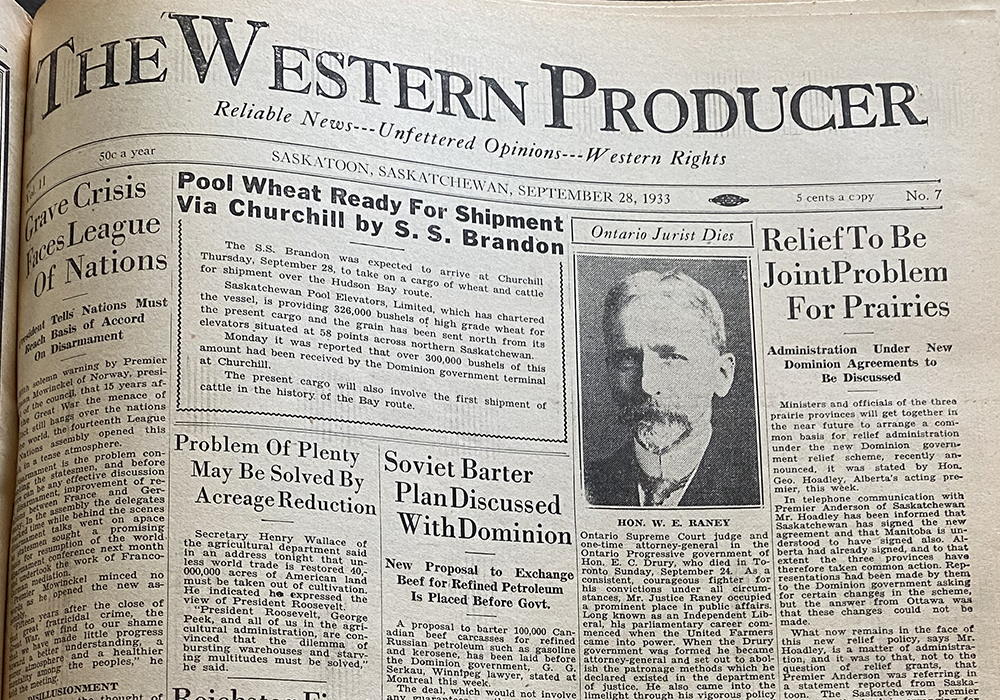For the next year, this column will mark The Western Producer’s 100th anniversary by taking a deep dive every week into a past issue of the paper.
We’re a third of the way through what is now called the Dirty Thirties, the climatic calamity that devastated prairie agriculture 90 years ago, but there’s little indication of that in the pages of the Sept. 28, 1933, issue of The Western Producer.
There was only a brief hint of the catastrophe — a story about prairie provincial officials meeting to develop a common basis for relief administration under the Dominion government’s new relief program.
Read Also

High prices see cow-calf producers rushing to incorporate
Farm accountants are reporting a steady stream of cow-calf producers rushing to get their operations incorporated ahead of selling their calves this fall.
I’ll be writing more about this in the weeks ahead, but that was it for this issue when it came to the dust bowl and the Great Depression — nothing about Bennett buggies, devastated families or failed crops.
In fact, the paper reported that U.S. agriculture secretary Henry Wallace had said unless world trade was restored, 40 million acres of American farmland would need to be taken out of cultivation because of the “dilemma of bursting warehouses and starving multitudes.”
The “bursting warehouses” reference seems a tad odd, considering a good chunk of the North American Great Plains was suffering continuous drought. Go figure.
Another story out of the United States talked about a march on the White House to ask for a cheaper dollar to help farmers.
As well, Canada was in talks with the Soviet Union about bartering beef for refined petroleum — 100,000 Canadian carcasses exchanged for Russian gasoline and kerosene. I’m not sure anything ever came of that.
It wasn’t just hard news in this issue.
There were four pages dedicated to women, including a gardening column and a story about accidents in the home, and three for young people. The Young Co-operators section, which was still around when I started working here in 1986, was seen for the first time.
The Open Forum page boasted 13 letters to the editor. We still have an Open Forum section, but we’re sure not running 13 letters an issue.















